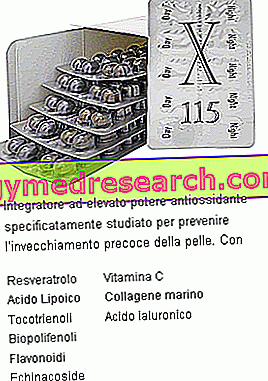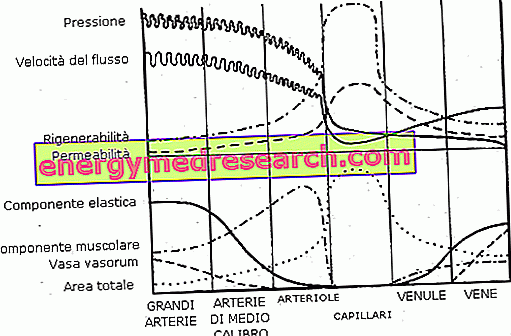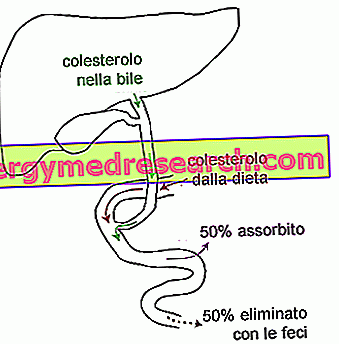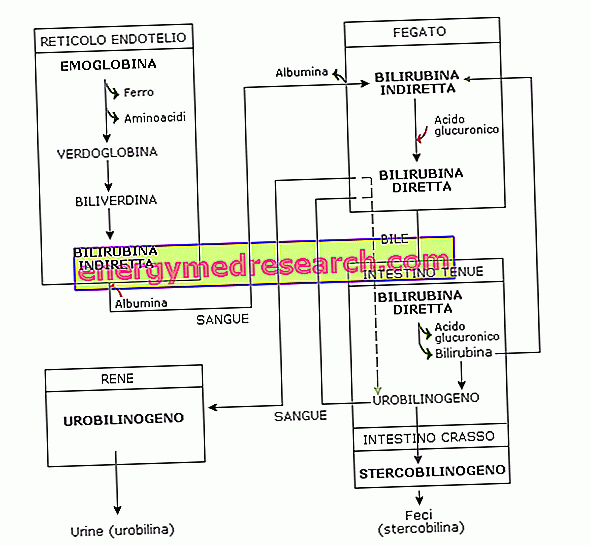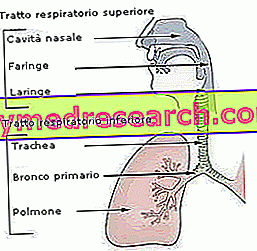Test Orac (Oxygen Radical Absorbance Capacity) The ORAC test is the method that is recently becoming the reference technique for measuring the antioxidant action of foods and supplements. The test is based on the ability of an antioxidant substance to inhibit the oxidative degradation of a fluorescent molecule caused by peroxyl radicals (ROO •).
Category physiology
Generality The female genital apparatus is the complex of anatomical organs and structures, which - in women - aims to control the mechanism of reproduction, from the production of egg cells to that of sex hormones. In describing the organization of the female genital apparatus, the anatomists divide the organs and anatomical structures into two categories, depending on whether they are inside or outside the human body
Arteries are circular membranous channels, used for transporting blood from the heart to all the tissues of the body; moving away from it they give rise to branches that diminish gradually in diameter, until they flow into the capillary nets. Nevertheless, the arteries are far from being simple inert conduits; we are in fact talking about dynamic structures, capable of contracting and expanding in response to the needs of the organism
Amino acids and proteins are the intermediates passing from the mineral world to living matter. As their name indicates, amino acids are bifunctional organic substances: that is, they consist of the amino function (-NH2) and the carboxylic function (-COOH); they can be α, β, γ, etc., depending on the position occupied by the amino group with respect to the carboxyl group: α-amino acid β-amino acid γ-amino acid Biologically important amino acids are all α-amino acids. Prote
The joints are anatomical structures, sometimes complex, which put two or more bones in mutual contact. To avoid degenerative phenomena due to wear, in most cases it is a non-direct contact, but mediated by fibrous or cartilaginous and / or liquid tissue. The joints of the human body are very numerous, there are an average of 360, and structurally very different from each other
The Β-oxidation is the set of processes that take place on carbon in Β carbonyl. The first enzyme in the process is acyl coenzyme A dehydrogenase which is found on the inner mitochondrial membrane and has as a cofactor the FAD which is reduced to FADH2 and cedes its reducing power to coenzyme Q (respiratory chain); this enzyme catalyzes the reaction that from an acyl coenzyme A, leads to the formation of enzyme coenzyme A (more precisely the trans 2.3
Basophils are rather rare white blood cells in the bloodstream (0.01% - 0.3% of the leukocyte population); nevertheless, the small amount present is easily distinguished by the large cytoplasmic granules, which turn dark blue reacting with specific dyes. Basophils release histamine, heparin (an anticoagulant), cytokines and other chemicals involved in the allergic and immune response
Cholesterol: Absorption and entero-hepatic circulation The absorption of dietary cholesterol occurs at the level of the small intestine, especially in the duodenum and in the jejunum, proximal and intermediate sections of this segment of the digestive tract. Of the 300 mg of cholesterol that we introduce approximately every day with food, only 50% is absorbed
Synthesis and functions Bradykinin is a nonapeptide with marked vasodilatory properties. Thus consisting of nine amino acids, bradykinin is synthesized locally in large quantities during inflammatory processes. For example, the inflammation that follows a trauma or the bite of an insect leads to the activation of kallikrein, a proteolytic enzyme that acts immediately on a particular class of plasma proteins (α-2 globulins), freeing callidine.
See also: high blood and bilirubin analysis Generality Bilirubin is a substance that derives from the degradation of hemoglobin, more particularly from the conversion of the EME prosthetic group contained in it. Most bilirubin (85%) derives from the normal process of destruction of exhausted red blood cells
The bronchi represent the airways contiguous to the trachea, which - in the adult - bifurcates at the level of the 4th-5th thoracic vertebra to give rise to the two primary or primary bronchi, one for the right lung and one for the left lung. The primary bronchi are subdivided in turn into branches of ever smaller caliber, constituting the so-called bronchial tree (just like a plant, they form branches that progressively diminish in size)

